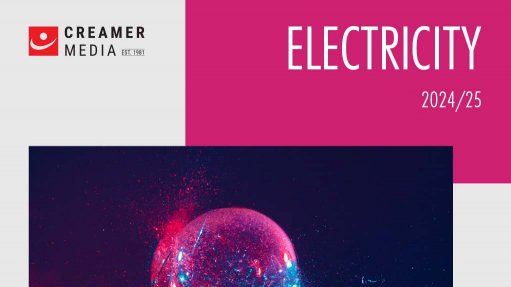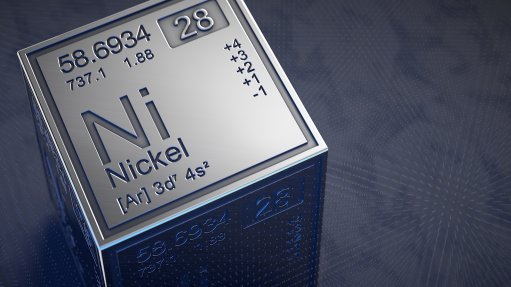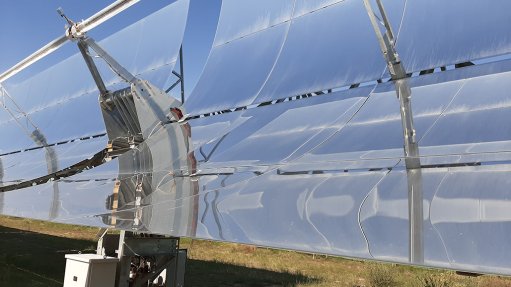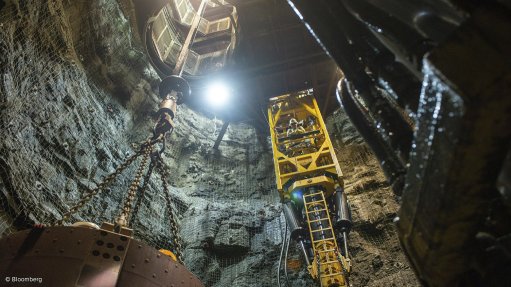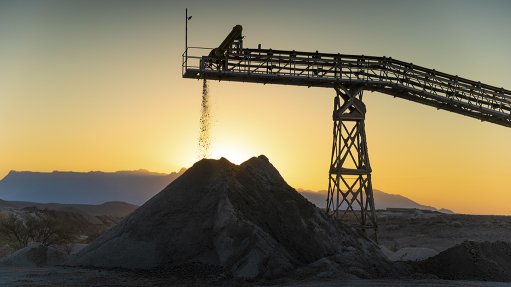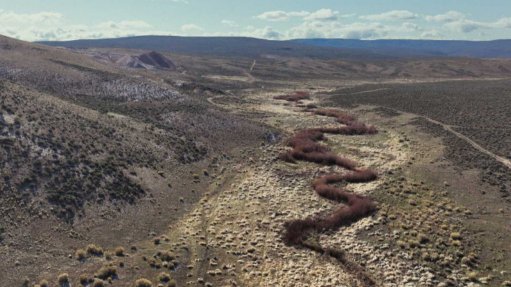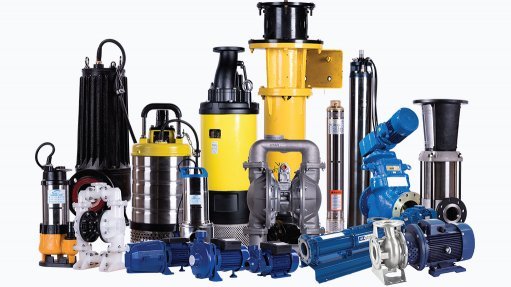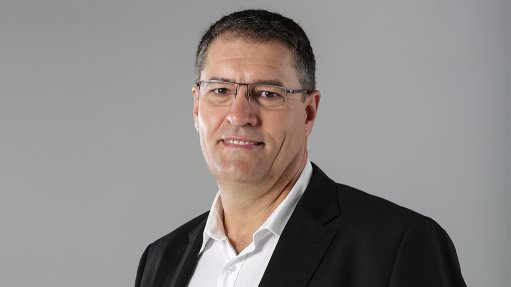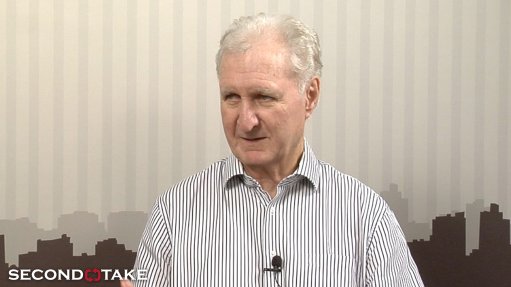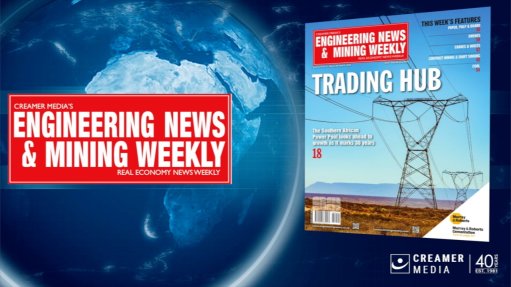Zambia copper mine blast company’s biggest blast to date
Explosives supplier and service provider BME achieved its biggest blast to date in March at Kansanshi copper mine, in the north-west of Zambia, detonating 4 141 electronic delay detonators (EDDs) in a single blast in the operation’s north-west pit.
The blast, which yielded 898 000 t of ore, comprised a main block, as well as trim blast just above the main block. The blast was done using one master blasting box at the point of blasting, communicating remotely to the slave boxes and detonators down in the pit, notes BME senior operations manager Wayde de Bruin.
“Everything went according to plan, with the logging, programming, status check . . . and blast . . . having taken place on schedule, with good results,” he says, adding that BME is currently “only 645 detonators away from the overall African record for all suppliers of EDDs”.
Base metals producer First Quantum Minerals’ subsidiary, Kansanshi Mining Plc (KMP), which has an 80% stake in the project, did the drill and blast planning for the blast.
The Kansanshi mine has a complex geological structure, with various types of ore. In addition, there are two supply circuits feeding ore into the beneficiation plant. These factors constrain blast operations, says KMP senior blast engineer William van der Walt.
Each blast is timed by KMP’s blast engineer to optimise fragmentation and grade control. With electronic initiation of blast holes, big blasts like this one can be achieved safely, owing to the accuracy provided by the timing of the blasts, he explains.
To improve the safety, operability and accuracy of blasts, BME developed AXXIS – its own digital initiation system. The system allocates precise firing times to detonators, allowing engineers to design complex firing sequences in a blast to achieve desirable and repeatable blast results.
He notes that electronic detonation has been growing in popularity, as more mines and quarries benefit from the reliability and accuracy of these devices, adding value to the operation’s bottom line.
The advantages of using electronic detonators include the ability to trigger blasts through a wireless signal, which also means that blasting lines to the detonators are less likely to be damaged, thereby, substantially reducing the likelihood of a misfire.
BME technical director Tony Rorke adds that the accuracy of electronic detonators is not only making blasting practice more predictable but is also allowing for larger and more cost-effective blasts.
In addition to supplying explosives to the South African openpit mining and quarrying industry, BME is also an innovator of various blast-related services and products.
“The use of shocktube (nonelectric) detonators has always had the limitation of relying on fixed-delay connections throughout,” says Rorke. “This places certain constraints on the blast design and implementation, and can raise the risk of a misfire under certain conditions.”
BME Namibia
BME Namibia has established a technical division at its Swakopmund office, reports BME South Africa and Namibia GM Albie Visser.
The unit will focus specifically on introducing BME’s highly specialised mobile testing vehicle, used for auditing purposes, at its drilling and blasting sites.
Two engineering graduates have been employed in the technical division and are being trained to operate BME’s technical equipment.
“We are also working on a partnership, which will result in the launch of a Namibian-owned transport company to serve some of our logistics requirements between Swakopmund and our Namibian customers,” says Visser.
He tells Mining Weekly that countries in the Southern African Development Community region treat explosives similarly, making it easy to adhere to explosives laws.
Moreover, Visser states that BME has mastered the delivery of explosives across borders since explosives were first delivered to mining major Rio Tinto’s Rossing uranium mine in 1984.
While there was a slow-down in the Namibian mining industry in 2014, exciting new projects, such as gold miner B2Gold’s Otjikoto gold mine, and copper-focused mining and exploration company Weatherly’s Tschudi copper mine, have recently come on line, improving the outlook for the sector, he adds.
One of the biggest mining projects in Namibia is China-owned Swakop Uranium’s Husab mine, expected to come into production by the end of 2016.
Further, to consolidate and expand its position in Namibia’s mining sector, BME Namibia is building its local skills, technical capacity and supply chain, says Visser.
He states that BME’s priority in Namibia has been to contribute in every possible way to local economic development, which will provide the company with the resources and network it needs to operate independently in the country.
This has meant empowering local people to lead and manage the business, and promoting local enterprises through the business’s supply chain. BME continuously trains its personnel through BME’s in-house designed Individual Development Programme.
“We have built a presence in Namibia since 1994, based on our confidence in the country’s people and its minerals,” says Visser, adding that the staff complement of 37 at BME’s Swakopmund head office are all Namibians, who have the necessary training and experience to run a high-performing and independent operation.
The office serves customers in the copper, gold, uranium and zinc sectors, as well as smaller quarries and road aggregate providers, supplying them with cutting-edge blasting expertise and products.
Visser says it was vital for the empowerment of local business people in Namibia that service providers to develop their ability to compete with counterparts in South Africa and other neighbouring markets.
“The stability of Namibia’s society and economy means that operational risk is very low – so we believe that there is plenty of scope for local businesses to become more competitive,” he says.
Meanwhile, the Namibian government is developing the New Equitable Economic Empowerment Framework (NEEEF) to ensure that Namibian resources are shared in an equitable and sustainable way.
The policy also aims for the implementation of measurable policies of to redress and redistribute wealth. It is hoped that the NEEEF will help remove barriers of socio- economic advancement to enable previously disadvantaged people to access productive assets and empowerment opportunities.
“At BME, we have been applying these principles for many years in the country without them being legally required, because we regard them as the foundation for ongoing economic stability and growth,” Visser concludes.
Comments
Press Office
Announcements
What's On
Subscribe to improve your user experience...
Option 1 (equivalent of R125 a month):
Receive a weekly copy of Creamer Media's Engineering News & Mining Weekly magazine
(print copy for those in South Africa and e-magazine for those outside of South Africa)
Receive daily email newsletters
Access to full search results
Access archive of magazine back copies
Access to Projects in Progress
Access to ONE Research Report of your choice in PDF format
Option 2 (equivalent of R375 a month):
All benefits from Option 1
PLUS
Access to Creamer Media's Research Channel Africa for ALL Research Reports, in PDF format, on various industrial and mining sectors
including Electricity; Water; Energy Transition; Hydrogen; Roads, Rail and Ports; Coal; Gold; Platinum; Battery Metals; etc.
Already a subscriber?
Forgotten your password?
Receive weekly copy of Creamer Media's Engineering News & Mining Weekly magazine (print copy for those in South Africa and e-magazine for those outside of South Africa)
➕
Recieve daily email newsletters
➕
Access to full search results
➕
Access archive of magazine back copies
➕
Access to Projects in Progress
➕
Access to ONE Research Report of your choice in PDF format
RESEARCH CHANNEL AFRICA
R4500 (equivalent of R375 a month)
SUBSCRIBEAll benefits from Option 1
➕
Access to Creamer Media's Research Channel Africa for ALL Research Reports on various industrial and mining sectors, in PDF format, including on:
Electricity
➕
Water
➕
Energy Transition
➕
Hydrogen
➕
Roads, Rail and Ports
➕
Coal
➕
Gold
➕
Platinum
➕
Battery Metals
➕
etc.
Receive all benefits from Option 1 or Option 2 delivered to numerous people at your company
➕
Multiple User names and Passwords for simultaneous log-ins
➕
Intranet integration access to all in your organisation





